Zoom Webinar Alternatives: Why Marketers Are Making The Switch
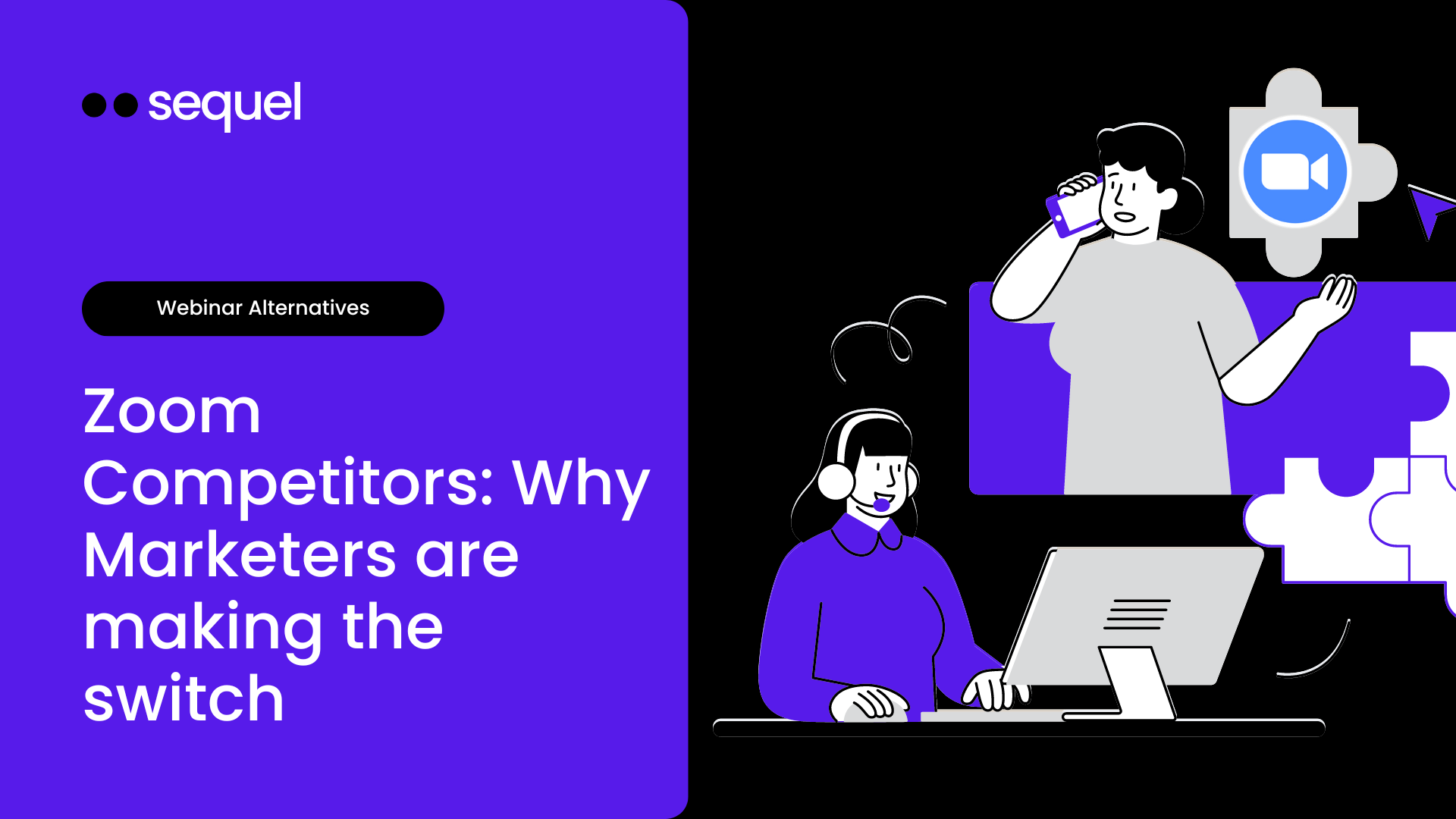
In recent years, the role of online communication has significantly grown stronger and more important. Amid this digital boom, Zoom Webinars have emerged as a dominant tool adopted by many marketers across the globe. However, like many technological platforms out there, it’s not without its set of challenges.
This has led several marketers and businesses to explore viable alternatives and contemplate making a switch. In this article, I’ll share:
- Why marketers are moving away from Zoom Webinars
- What issues they’re facing
- And 5 top-notch alternatives that are outperforming Zoom
But first, let’s tackle a common misconception: Zoom Webinars are not the same as Zoom Meetings. Let me explain…
What is a Zoom Webinar & How is it different from Zoom Meetings?
It’s important to understand what a Zoom Webinar is versus its meeting counterpart. On one hand, Zoom Webinar is a one-to-many communicative model typically used for large-scale events such as lectures or presentations with up to 10,000 viewers (depending upon the subscription type).
The host usually turns off participants’ video streams by default giving them the status of observers rather than active participants – essentially no mute button on Zoom Webinar holds true for most attendees unless explicitly allowed.
On the contrary, if you look at hosting a seminar in Zoom meetings format instead – it’s much more interactive and collaborative enabling up to 1000 participants who can see each other when cameras are turned on during discussions – indeed with Zoom meetings versus webinars everyone gets ample time under the spotlight.
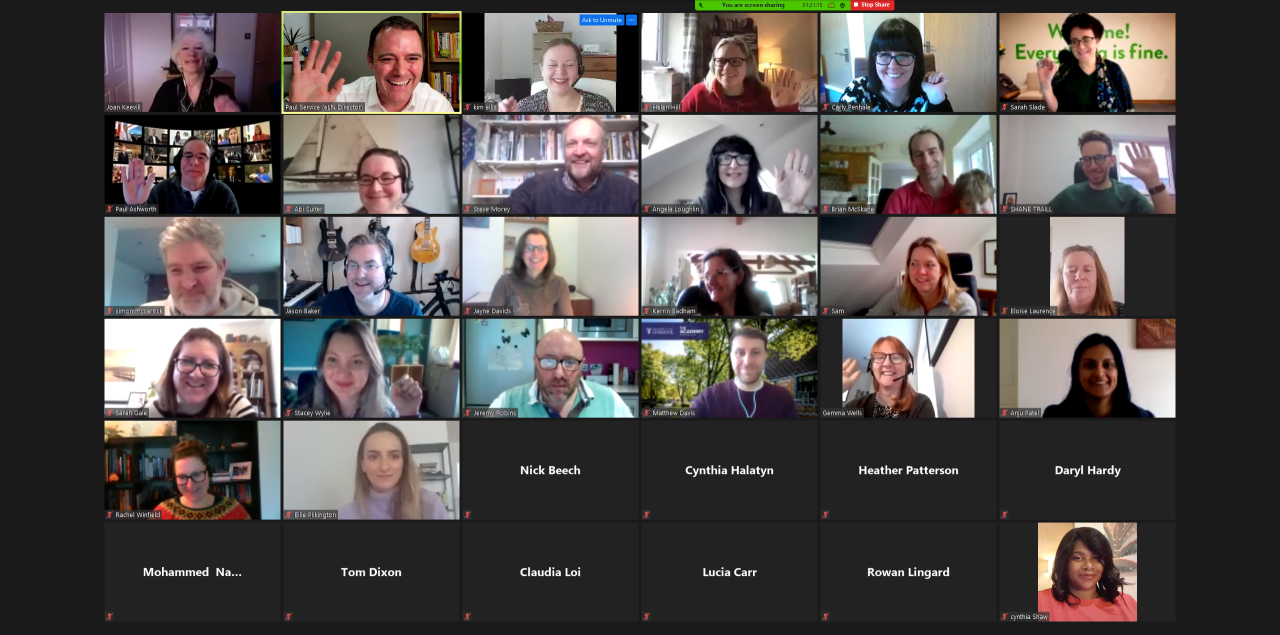
So does Zoom Webinar have breakout rooms just like its meeting counterpart? Unfortunately not. The breakout room feature remains exclusive only to meetings thus adding another distinct difference between these two modes offered by Zoom.
Having talked through the differences between Zoom Webinars vs meeting formats we can now delve deeper into understanding the specific benefits the webinar option offers while highlighting the core limitations leading marketers to seek alternatives.
Benefits of Zoom Webinar
Anyone stepping into the realm of virtual communication will be sure to encounter Zoom in their journey. Mainly known for its video conferencing services, Zoom extends beyond just meetings with its platform literally named “Zoom Webinar”. Understanding ‘what is a Zoom Webinar’ and its various benefits can provide powerful tools for marketers looking to host large-scale presentations or conferences online.
As a solution that amplifies your reach, the first advantage found in using Zoom Webinar lies within Zoom’s Webinar capacity. It enables handling thousands of attendees at once (up to 10,000 view-only attendees), which can bolster a marketer’s ability to engage larger audiences.
Another notable benefit is related to its interactive features. Despite being in Zoom Webinar mode, interactions are not one-sided. Various engagement-driving mechanisms such as polls, Q&A session capabilities, and chat options allow marketers to turn passive listeners into active participants. Yet, this has become a feature that most webinar tools have these days.
If you were wondering how a Zoom Webinar works, part of the appeal comes from its simplicity. With a simple user interface and instructions on how to set up a Zoom Webinar, hosts can navigate with ease. This allows them more time to concentrate on delivering quality content rather than battling technical issues.
When examining the Zoom meeting vs Zoom Webinar debate, privacy often crops up as another key benefit in favor of webinars. Within the ‘Zoom Webinar camera’ settings, organizers craft their attendee’s experience by choosing whether they start off muted or if their cameras remain off—steering away potential distractions. But it’s important to know that attendees are still prompted to connect their audio and video which can be confusing.
The last point worth mentioning pertains to how to mute people on Zoom Webinar or managing other controls centrally from the host panel. This includes allowing registrations before events, and controlling who participates in discussions delegated by roles namely; hosts, co-hosts, and panelists. This feature attempts to help event hosts stay professional during their sessions.
Overall these benefits sum up why Zoom Webinar has previously been embraced by marketing professionals worldwide for reaching wider audiences while fostering rich engagement. However, numerous Zoom alternatives have grown popular due to limitations found within this platform—which we’ll delve into next!
Core Challenges Zoom Webinar Users Face
In the sphere of digital marketing, platforms like Zoom Webinar offer utility, but they also present a few significant challenges. These concerns often cause marketers to seek out other viable alternatives.
Data Ownership & Terms of Service Policy
When hosting a webinar on Zoom, data ownership becomes an alarming concern. As the organizer, one would assume ownership of all hosted content and user participation details. Unfortunately, this isn’t entirely true with Zoom Webinars. Complex as it sounds, Zoom’s Data Usage Policy does not assign exclusive data control rights to the host; instead, it retains some implied rights on usage data and shared content during meetings or webinars.
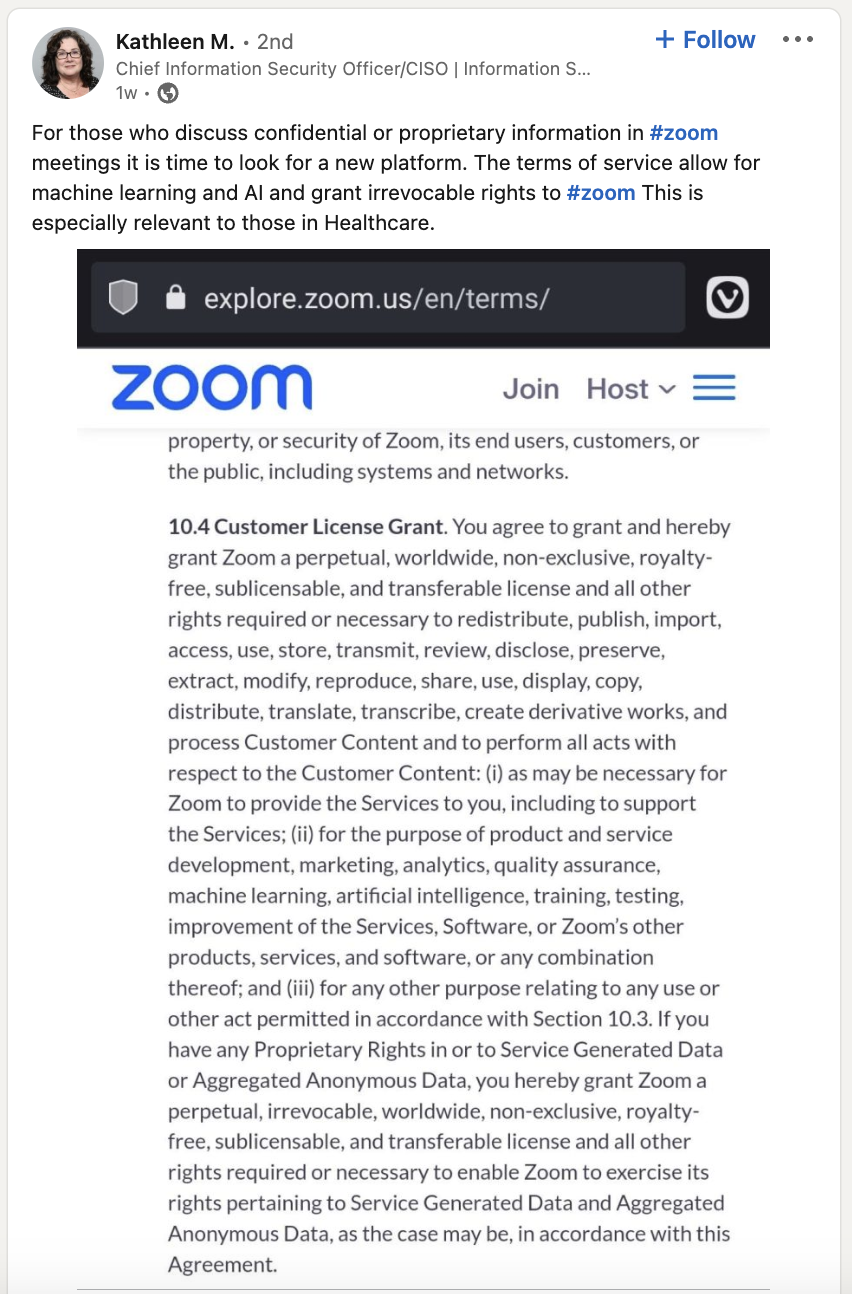
Considering that marketers often deal with sensitive customer profiles or source content in their presentations, such issues around data ownership result in considerable discomfort. Hence many marketers are moving beyond Zoom Webinar due to these policy implications.
Lack of Innovation
While there is no denying that the ability to host a webinar using Zoom has been truly eye-opening for many businesses in the past, critics argue that innovation has somewhat plateaued on the platform since its peak period of development.
Although core features were developed swiftly at first helping wide adoption globally; updates have since become incremental – focusing more on minor improvements rather than disruptive new features. Compelling users seeking further functionality and innovative solutions to consider Zoom Webinar alternatives.
Screen Sharing Privacy Issues
Another challenge comes under the screen sharing privacy issues in Zoom Webinars. It’s common knowledge that you can share your screen as it is a key feature of Zoom Webinar. But have you noticed how much information can be exposed when you share your screen?
Unfortunately, hosts have little control over which attendee or speaker could potentially overshare private information through accidental screen-sharing incidents if given access permissions prematurely or incorrectly during a Zoom Event vs Zoom meeting scenario – making them feel vulnerable when data security matters are concerned.
Poor Attendee Experience
The last but equally prominent hurdle occurs around providing an excellent attendee experience during webinars in Zoom.
Even though joining a webinar via Zoom is thought to be simple so attendees don’t need high technical proficiency— it is still recommended by Zoom that everyone downloads the software which takes up time and computer storage.
Additionally, many of the top Zoom searches on Google are related to attendees being concerned about their experience. Namely, whether or not people can hear or see them when joining the webinar since they are prompted to test both inputs when attempting to join.
When it comes to the host’s management of the attendee experience with Zoom’s customization options though, it is much harder to create a really engaging environment. This can be caused via the management of large participant numbers within one session, proving complex for hosts.
For instance: the perceived lack of engagement due to poor handling of questions & response procedures; lack of automated muting for all participants till explicitly permitted by the host etc., contribute toward relatively lesser engaging interactions causing poorer attendee satisfaction levels.
These factors then motivate marketers to look towards better-designed alternatives.
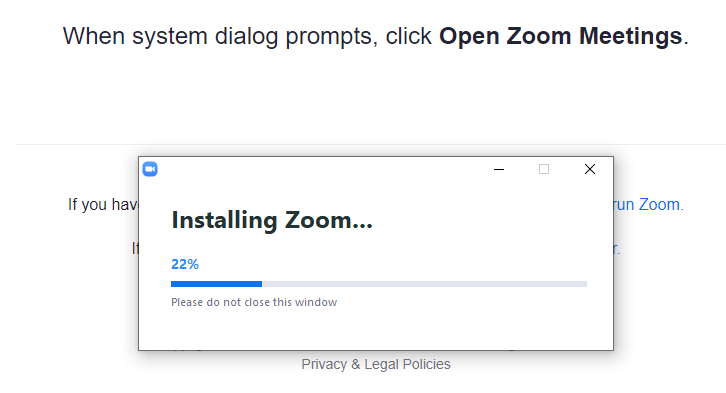
Top 5 Alternatives to Zoom Webinar – Ranked
As more marketers drift away from Zoom Webinar towards more beneficial alternatives, a myriad of other virtual platforms have cut through the noise. Let’s delve into these innovative solutions and evaluate them based on their overall score, features, and experience.
1. Sequel.io

Sequel.io sets itself apart from competitors by being the only webinar solution that allows you to host your webinars directly on your website as well as repurpose your webinar content in seconds using Sequel AI.
These two features, among many more, don’t just save you time and create a cohesive brand experience for attendees, they allow you to drive revenue by putting your audience in front of high-intent CTAs and ensuring you are providing them top-notch value every time you go live on your site. Why send your audience to another platform if the end goal is to get them to convert on your website?
Being a new player in the webinar & virtual event space, they are impressively driving innovation and challenging other solutions to keep up. When all factors are considered, it scores an impressive 9.5 out of 10 as a Zoom Webinar alternative.
2. ON24

ON24 offers an array of features intended to enhance attendee engagement during webinars such as polls, surveys, and Q&A interaction modules – addressing one of the key shortcomings faced by current Zoom Webinars users. Moreover, ON24 provides analysis features to help hosts gauge audience participation during live sessions accurately.
This solution is known to come with a steeper price tag but you have to receive a personalized quote since their pricing is not available on their website – but considering the value it brings, ON24 deserves a rating of 8 out of 10.
3. Airmeet

Airmeet is another versatile Zoom Webinar competitor catering to various hosting needs – business meetings or large conferences alike. Incentives like networking lounges let participants connect before and after sessions just like traditional events. Also praised for their speed networking feature which some conferencing suites lack. As a comprehensive solution, Airmeet receives a strong score of 7 out of 10.
4. Livestorm

Livestorm has stepped into this arena with a keen focus on providing seamless browser-based experiences without requiring software downloads—addressing issues that often marred Zoom meetings versus webinars comparison. Offerings like interactive chat windows, evaluating webinar metrics & robust integrations make Livestorm stand tall amidst online meeting platforms realm. It’s also quite reasonably priced considering its rich feature suite hence placed at number four scoring a solid 7 out of 10.
5. GoToWebinar

GoToWebinar is one prime choice if you need engaging high-volume broadcasts; much suiting large enterprises who wish to host big events featuring hundreds or even thousands of people simultaneously. Prudent features including webinar templates & detailed analytics come bundled along giving hosts better viewer insights & less time spent setting up! What slightly pulls down its ranking is perceived complex UI when pitted against these modern counterparts – ending our list with a total score of 6 out of 10.
Each platform shines in specific areas and hence will cater better depending on your unique needs thus recommended to try a few before settling down with one! When you are considering a new webinar solution make sure to think about scaleability and innovation so that when you grow, your tool grows with you.
Conclusion
In light of the issues and limitations that come with using Zoom Webinar, agile marketers are turning towards viable alternatives. These challenges include concerns about data ownership policies, a perceived lack of consistent innovation in their features, screen-sharing privacy issues, and a less than acceptable attendee experience.
The evaluation of five alternative platforms to Zoom Webinar—Sequel.io, ON24, Airmeet, Livestorm, and GoToWebinar—is proof that there is no shortage of options for hosting webinars online. Even though there are many webinar solutions in the market, these 5 take the cake. Each offers its unique capabilities which could be game-changing depending on your specific requirements.
Sequel.io earns the number 1 spot in our list, scoring the highest out of the top 5 webinar solutions due to its virtual event experience hosted directly on your website and content AI repurposing technology. However, it’s still important to understand the strengths of all webinar tools in the market.
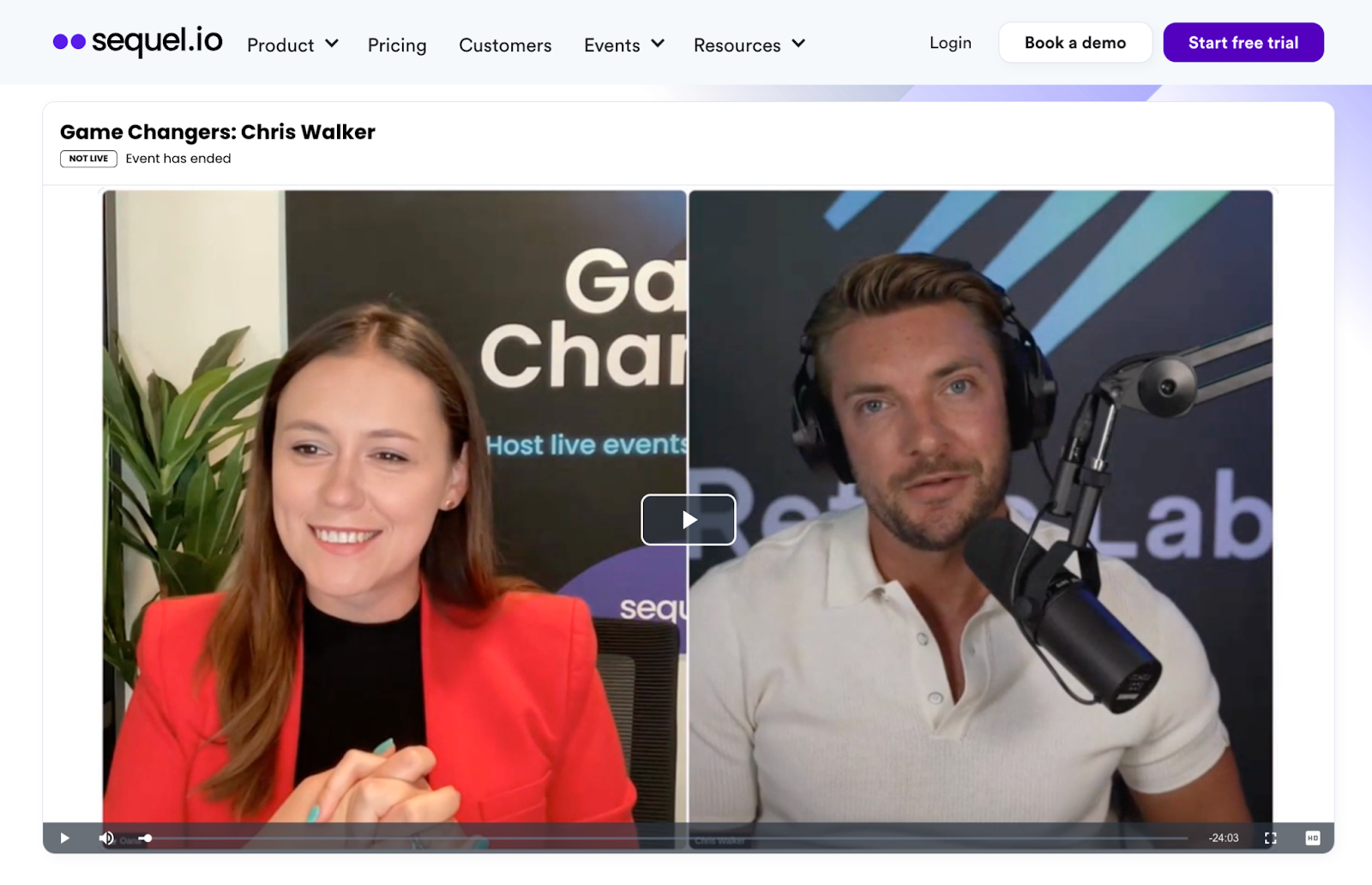
Indeed the competition among these Zoom Webinar alternatives is fierce but it can be an opportunity to explore solutions that offer a better fit and drive growth.
So before you set up your next webinar on Zoom or any platform, think about what you need most: Is it content repurposing functionalities? An intuitive chat feature? High-resolution video feeds? Or perhaps live webinar embeddability?
Whatever those needs might be, chances are there’s a gem among these Zoom Webinar competitors poised perfectly not just to meet your need but exceed them as well.
If you want to get a taste for Sequel, tune into Game Changers – Sequel’s weekly webinar series where they invite Marketing Leaders to talk about how they are driving growth and innovation.